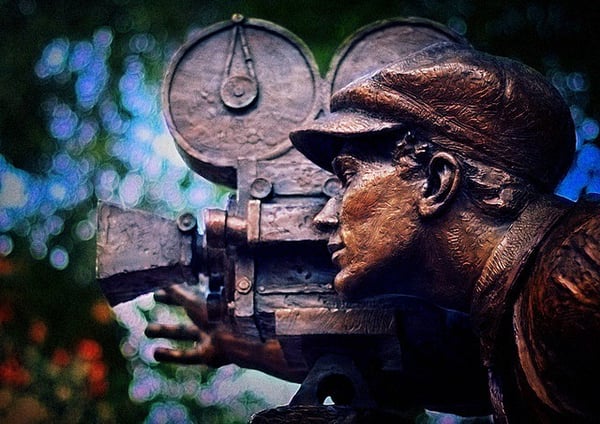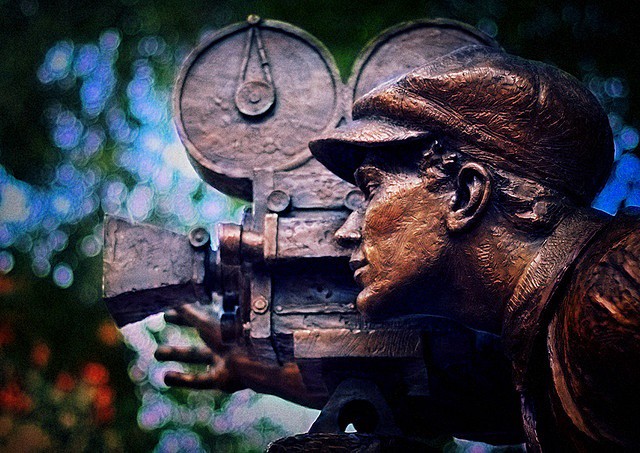What Documentary Filmmakers Need to Know About Fair Use, Part One
by Courtney Duffy, Robert W. Deutsch Arts & Technology Policy Fellow at Fractured Atlas

This post is the second installment of #CopyrightwithCourtney, a series from Courtney Duffy on the copyright challenges faced by artists in various disciplines. Courtney, who is Fractured Atlas’ Robert W. Deutsch Arts & Technology Policy Fellow, focused on authorship in her first post. Today she begins a three-part post for the series on filmmaking. You’ll find her on Twitter @cduffy90.
A few months ago I came across an article called “Picking the Lock: Filmmaking in the Digital Age.” The piece, which comprises a chapter of a book from Public Knowledge called “So What…About Copyright?” (2006), was penned by two working filmmakers named Vivian Kleiman and Gretchen Stoeltje. In it, Vivian and Gretchen discuss copyright-related opportunities and hurdles facing filmmakers in the digital age. Fast forward nearly 10 years and both artists generously agreed to answer questions for my copyright series. Their respective responses were so thorough that — to my delight — they merited individual posts.
I’ll begin with Vivian Kleiman.
More than two decades ago, Vivian co-produced a feature-length documentary with writer/director Marlon Riggs on television’s representation of race relations.The film, which was called Color Adjustment, premiered at the 1992 Sundance Film Festival and was met with critical acclaim. Riggs and Kleiman weaved clips from television sitcoms like Amos ‘n Andy, The Cosby Show, The Nat King Cole Show and Julia into the film’s overarching narrative. While they did pay some copyright owners to license their footage in instances where it was the only way to access the material, in most cases they used footage without paying a licensing fee, citing fair use.
Although lawyers from CBS and other organizations accused Vivian and Marlon of stealing their property — some demanding money and others threatening to block the film’s distribution — most minor legal challenges proved not to have legs and Color Adjustment went on to win television’s esteemed accolade, the George Foster Peabody Award.
In the following answers Vivian describes her experiences and just how important it is that filmmakers know their rights when it comes to fair use:

When Marlon Riggs & I set out to produce Color Adjustment around 1989, we were the first high profile documentary project to rely extensively on the Fair Use Doctrine. It had only been incorporated into the Copyright Act some 13 years earlier. We launched into production knowing we were blazing a new trail.
While we anticipated some push back from the major TV studios, we also expected that an article in the New York Times — à la David vs. Goliath — would be great press for the film. To be safe, we also gave the same assignment to three attorneys, asking them to write a letter of opinion defending our use of the material under the Fair Use Doctrine. So we were prepared when the first letter arrived in the mailbox from CBS demanding that we delete Amos ’n’ Andy from the documentary. At the same time, we were relieved when their attorneys didn’t pursue further legal action after they received the Letter of Opinion, thus tacitly acknowledged our appropriate use of that contentious material.
If this sort of film were to be made today, how would the circumstances be different for the filmmakers?
Were I to produce that film today, it would be a much simpler process: Thanks to the Internet, one can locate old TV shows with the push of a button. By contrast, I had to spend six months on the telephone, getting a cauliflower ear while I tracked down quirky characters who squirreled away prints of old TV shows (retrieved from TV station dumpsters or acquired from other collectors) and convinced them to make a professional-quality copy for us. It was all through word of mouth.
At the same time, there was little copy protection on the prints or VHS copies so the actual footage was more accessible than it is today. Some of the old TV shows were dubbed from high-quality BluRay discs or low-quality VHS (available from video stores that no longer exist).
And finally, thanks to the heroic efforts of Pat Aufderheide and Peter Jaszi and the Center for Media & Social Impact, we have a “Best Practices for Filmmakers” that helps indie filmmakers make use of the Fair Use Doctrine with greater impunity.
How has the digital age impacted your creative process as a filmmaker, for better and for worse?
I was an early adopter of digital technology, having been among the first in the Bay Area to acquire a “Prosumer” digital camera. At the same time, it’s cursed us with incompatible formats, expensive gear upgrades and mountains of electronic waste.
Digital technology created the Age of DIY, in which anyone with the pluck and the patience to learn software can shoot and edit a video. What we see, however, is that learning technology is not usually a springboard to good storytelling. Film festivals are flooded with mediocre submissions. Great subjects are handled very poorly. And budgets for professional filmmakers have plummeted even further because in addition to being the director, a filmmaker is expected to be the producer, cinematographer, sound recordist and editor as well.
You have taught Documentary Film & Video Production at Stanford — to what extent did you discuss copyright implications with your students and how did you frame these discussions when they arose?
Each semester I would devote a two-hour class to the Fair Use Doctrine. While the policy of the program was to discourage students from turning to Fair Use, I was eager to educate them in its proper use as a defense for its stated purpose: to encourage critique of the media.
While it behooves today’s filmmakers to familiarize themselves with the ins and outs of fair use as Vivian did, there are valuable resources available to inform them along the way. Vivian is one of many consultants who work with filmmakers to fairly use copyrighted work in their art, and she’s not alone. In the next post you’ll hear from Jack Lerner, director of the Intellectual Property, Arts, and Technology Clinic at University of California Irvine, who provides legal expertise to filmmakers. You’ll also, of course, hear Gretchen Stoeltje’s answers to my questions. Stay tuned! Special thanks to Vivian Kleiman for her thoughtful responses, some of which I reordered and lightly edited. Visit Vivian’s website to learn more about her work.
Courtney Duffy is the Robert W. Deutsch Arts & Technology Policy Fellow at Fractured Atlas, a nonprofit technology company that helps artists with the business aspects of their work. To learn more about Fractured Atlas, or to get involved, visit us here.
About Fractured Atlas
Fiscal sponsor, fundraising platform, educational resource, advice from a staff of experienced artists & creatives. We’re rooting for you!


